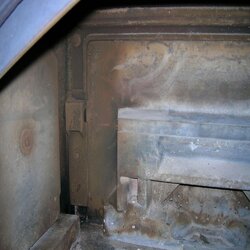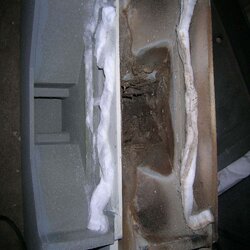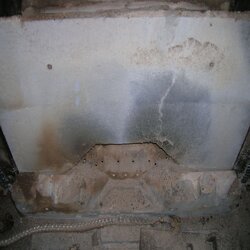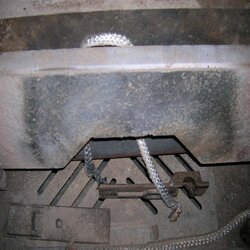The sad thing is that not one person so far has posted that they are able to get consistent good results from this stove. Lots of people have posted about problems, some serious, several have posted that they replaced the stove with a different model (at their own expense). To me, burning clean is of the utmost importance - I don't want my neighbors to even know that I'm burning, and I certainly don't want to smoke up the neighborhood. Many of us "everburners" have given these stoves all our effort, using them for 1 or 2 full years now, experimenting in every way we can imagine. And after all this effort the best we can say is that it "sometimes" gives a long clean burn. I think under IDEAL conditions, perfect draft, perfect wood, and a huge coal bed, you can get good results - for the other 95% of the time you won't.
I just started burning again last night (we finally made it down to the low 20's with a good hard frost) and if you can't tell already, I'm frusterated with this stove. I can heat my house fine, but it doesn't burn clean, and burntimes are normally not that great. Honestly I'm almost ready to buy another stove - which really sucks because it will increase my payoff time on investment by at least another year if not more (and most of us know how much work goes into gathering, splitting, stacking a year's supply of wood).
I wish there was some way I could swap out my stove with CFM/Vermont Castings for just about any other model they sell that actually works consistently (I wouldn't mind going catalytic) without costing me an arm and a leg. I think they need to step up to the plate and admit that this design is flawed, and they need to either fix it or stop selling this model of stove. There have been enough complaints already on this forum, and like I said, literally not one person has come out saying they are fully satisfied with this stove (BurningIsLove and myself are the closest thing, and I don't think that is saying much at this point!)
My friend who bought a cheap-o $700
Drollet last year from northerntool.com says he never has visible smoke coming out his chimney except when starting a new fire or reloading (and then only for a short time). I'm tempted to just buy one of them myself, of course now that winter's here they want $1000 for it.
IF CFM/VERMONT CASTINGS had any business sense at all they would make me happy. My silly "woodstove" webpage has had over 12,000 hits since I put it out there, not to mention the much more significant traffic on hearth.com which contains reviews from me and many other people on their stoves. Over the years I'm sure I will influence hundreds of sales of whatever stove I end up actually being satisfied with. At this point I can only hope that I did NOT influence too many people to purchase a Dutchwest because I think it will lead new wood burners to frusteration and smokey neighborhoods.
Elk - if you can forward this to someone at CFM that actually cares (if there is anyone) I would love to get some feedback from them...





